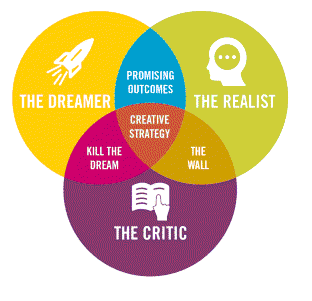This is sort of a late post since the International Women’s Day was about 20 days ago. But nevertheless, here goes my reflection on the IWD 2021 pledge this year. #ChooseToChallenge has sparked interesting conversations because as we challenge the gender bias, inequality and non-inclusion aspects of the system and life, it also forces us to think about the kind of questions we are asking. We often question the ‘what’ and hold the ‘who’ accountable for things that happen ‘when’ and ‘where’ — but that is only the tip of the iceberg.
As we think about ‘why’ certain biases exist and challenge the barriers to equality, we should also choose to challenge the system from “How come?” “Why not?”and “What if?” perspectives. One of the things that I’m noticing recently is the fact that people have a biased view of brands and treat non-popular brands unfairly. And no, I’m not talking about clothes. I’m talking about education. People who go to prestigious universities in their city/country are often perceived as someone who are talented, who are automatically assumed they possess special skills and so on. Now I DO NOT have a problem with that.
What I have a problem with is — when people from not so prestigious universities apply for the same job or have their performance reviewed by a manager, the same “special skills” which are automatically assumed to be present in graduates from prestigious universities are questioned and assessed critically in folks who did not graduate from likes of those prestigious universities. Again, I DO NOT have a problem with being assessed critically. My problem is — why are they the only ones who get critically assessed? Why not make it an assessment criteria for all regardless of where they graduated from? If you have not yet watched this Netflix documentary called Operation Varsity Blues: The College Admissions Scandal, you should. It talks about how prestigious universities in the US don’t just take in ‘deserving’ and ‘talented’ candidates… see for yourself what kind of people end up in the likes of Stanford and Harvard.
Personally, I feel fed up with the whole part of challenging the system and just want to go and DO something. I mean, I’m all in for women voicing out their opinions, asking the right questions but as I reflect on the whole equality subject, I just want to stop talking and do something.
And that’s when something interesting came to my mind — how do I solve a problem so big? How do I approach this situation and where do I even start? I began to realise that what I merely experienced was frustration but in order for me to get started on creating an impact, making a change… I needed a big clear vision. I had to be clear on what is the change that I needed to bring, in order for me to plan and execute. And the strategy that helped me to visualise, articulate the action plan and make it fail-proof is the one you may be familiar with — the Disney Strategy.

The Disney Strategy
This strategy introduces 4 different personas — the dreamer, the realist, the critic, and the observer. And the important thing to note is to follow the same order as you approach the problem statement.
Step 1: Unlock your big dreams
Imagine yourself to be the visionary and articulate all the big things you would like to accomplish. Dream as big as you want because here’s the stage where your ideas flow without any limitations, restrictions or criticism. What is that dream you would like to see come true?
Step 2: Become realistic
As you turn on the hat of a realist from that of a dreamer, go with the assumption that your dream can come true. Having established that, ask yourself — what are the steps you need to take, in order to make that dream come true? What resources do I need? What are the timeline and the budget? What is the action plan?
Step 3: Practise Skepticism
Now that you have a vision and an action plan, put on the critical hat and ask yourself “what can go wrong with this plan?” This is what I call making plans fail-proof. Here’s the stage where you ask yourself — what are the potential barriers? What is the roadblock I will encounter at each stage? What am I missing? What are the strengths and weaknesses?
Step 4: Think out of the box
The last hat you definitely need to try on is that of the observer. Here’s where you need to detach yourself from the dream or the vision and test whether it makes sense or not from the point of view (POV) of an observer.
The reason why it has to be step by step is that you need to start with the dreamer. Introducing a realistic POV or a critical POV at the very beginning means that you will never get a chance to dream big. I have to say that I did not come up with any extraordinary solutions to the big challenges and go on to change the world yet, but this exercise was so useful for me that I feel everyone can benefit from applying this to their life in different instances.
What is your International Women’s Day pledge? What is the system you would like to challenge? Let us know in your comments!

